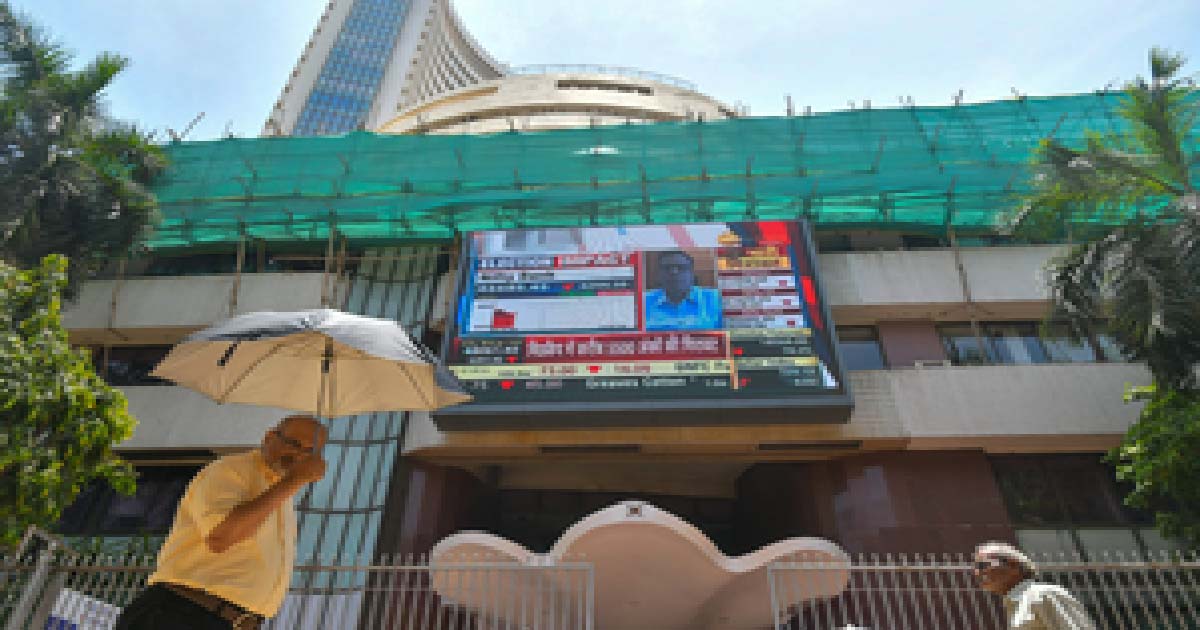Business
‘Its Prime Real Estate’: Anand Mahindra Expresses Awe At Grandiose Of Brabus Big Boy 1200

In the City of Dreams that is Mumbai, one of the biggest ‘dreams’ of most who live in the metropolis is to find an abode, that they can call it their own. Real estate in Mumbai is known for its sky-high pricing, with figures of Rs 10-15 crore not surprising anyone.
The Motorhome
Space is a major issue in city, given the paucity of it, in a region that encompasses millions. However, what happens when the space is not only available but also mobile? That is precisely what a ‘motorhome’.
It may not been the most commonly seen or discussed avenue in this part of the world, but in other parts of the world, particularly in the US, an RV or recreational vehicle is the way of life, either by choice or by circumstance.
Mahindra Group chairman, Anand Mahindra recently reacted to one such motorhome. In a post on X, he shared a minute-long clipping of the Brabus Big Boy 1200. This is an uber-luxe, profligate motorhome manufactured by the German automobile company Brabus.
Mahindra, while reacting to the video of a person showing around the bus said, That’s not transport. It’s prime real estate.”
And one may arguably agree with Mahindra on this. The vehicle is extravagant and has a length of 12 meters or 39.4 ft and over 30 square meters or 320 sq ft. For context, the average size of homes in city of Mumbai hovers around 400-700 sq ft.
What Are The Features Of This Motorhome?
In addition, the vehicle also has two electrically extendable slide-outs on each side. These slide-outs can extend the bedroom and saloon to a width of 4.50 meters.
In addition, the motorhome also consists of a double bed measuring 160 x 200 centimeters.
A closet is integrated into the rear wall of the vehicle.
For amusement, the vehicle also has a desk and a 43-inch 4K television. Here one could watch TV programs that have been made available on the system play games on the integrated Playstation 5 system.
In addition, one can also connect to the internet through the Starlink system.
When it comes to the vehicle, it runs on a12.8-liter six-cylinder turbodiesel engine. This engine can deliver 390 kW / 530 hp and can generate a maximum torque of 2,600 Nm.
The vehicle is priced at around USD 1.5 million or a whopping Rs 12 crore.
Business
India-AI Impact Summit 2026 to generate actionable recommendations: Minister

New Delhi, Dec 3: Reflecting India’s growing role in global AI discussions, the country will host the India-AI Impact Summit 2026 here from February 16–20, the government said on Wednesday.
For the first time, the global AI summit series will take place in the Global South and the shift signals a broader move toward a more inclusive global AI dialogue, said Union Minister of State for Electronics and IT, Jitin Prasada, in Lok Sabha.
“In line with Prime Minister Narendra Modi’s vision, the government is democratising the development and usage of technology. The focus is using Artificial Intelligence (AI) for solving real-world problems and ultimately improving lives across various sectors,” said the minister.
In this regard, the government has taken an inclusive and innovation-friendly approach to AI governance. India’s AI strategy has been formed after studying legal frameworks around the world and extensive consultation with stakeholders. A key pillar of India’s AI strategy is its balanced and pragmatic techno-legal approach to regulation.
The summit reflects India’s growing role in global AI discussions. It follows the UK AI Safety Summit, AI Seoul Summit, Paris AI Action Summit (which India co-chaired), and the Global AI Summit on Africa.
This demonstrates that the Summit is situated within a broader global discourse and seeks to contribute to harmonised international cooperation on responsible AI development, said the minister.
The thematic priorities of the Summit, referred to as the seven ‘Chakras’, underline its key objectives. These include Human Capital, Inclusion, Safe and Trusted AI, Resilience, Innovation and Efficiency, Democratizing AI Resources, and AI for Economic Development and Social Good.
These thematic areas encompass issues such as AI safety, data governance, transparency, human-centred development and accountability frameworks. These discussions are aligned to drive the strategic direction of the Summit’s events and deliberations.
The Summit is intended to generate actionable recommendations that contribute to long-term AI governance objectives rather than framing immediate binding regulations.
Business
Sensex, Nifty open flat as IT and pharma gain

Mumbai, Dec 3: The Indian stock market opened on a quiet note on Wednesday, with both benchmark indices showing minimal movement in early trade.
The Sensex inched up by just 12 points to 85,151, while the Nifty slipped 18 points to 26,014.
Most of the major Sensex stocks were trading in the red, dragging the indices sideways. Shares of HUL, Titan, Tata Motors PV, NTPC, BEL, Trent, Bajaj Finserv, Kotak Bank, Ultratech Cement, Maruti Suzuki, L&T, Power Grid, and ITC were among the top losers in the morning session.
Despite the broader weakness, some heavyweights helped limit the downside. TCS, Infosys, Eternal, HCL Tech, Axis Bank, Tech Mahindra, and Adani Ports were trading higher, providing support to the indices.
In the broader market, mid- and small-cap stocks showed resilience. The Nifty MidCap index managed to rise 0.02 per cent, while the Nifty SmallCap index gained 0.08 per cent after erasing early losses.
Sector-wise, IT and pharma stocks outperformed the market. The Nifty IT index rose 0.7 per cent and the Nifty Pharma index added 0.3 per cent.
These sectors benefited from the Indian Rupee hitting a record low, as many companies in these industries earn a significant part of their revenue in dollars while most of their expenses are in rupees.
On the other hand, PSU bank stocks were under pressure, with the Nifty PSU Bank index falling 0.6 per cent in early trade.
Analysts said that the market remained range-bound as mixed global cues and a weak currency influenced investor sentiment.
“The ideal strategy for investors in this period of uncertainty is to remain invested in high quality growth stocks in the large and midcap segments. Smallcaps, as a segment, continues to be overvalued and are, therefore, best avoided,” market watchers added.
Business
Sensex, Nifty recover from early fall as profit booking keeps markets volatile

Mumbai, Dec 2: Indian stock markets opened with a sharp gap-down on Tuesday but soon recovered some losses as investors continued to book profits after the recent rally.
The Sensex was trading at around 85,508, down 134 points or 0.16 per cent, while the Nifty slipped 31 points or 0.12 per cent to 26,145.
“The Nifty’s positional trend remains bullish, with strong support at the 26000-26050 zone. On the higher side, 26300 could offer resistance on a closing basis,” market watchers added.
Heavyweights such as HDFC Bank, ICICI Bank, Ultratech Cement, Axis Bank, Bajaj Finserv, Tata Steel, Tata Motors PV, Titan Company and Power Grid dragged the indices lower.
Eternal also remained under pressure during the early trade.
However, selective buying in stocks like Asian Paints, Infosys, Bharti Airtel, Bajaj Finance, SBI, Maruti Suzuki, NTPC, HUL, and L&T helped the Sensex limit its losses and attempt a mild recovery.
In the broader market space, the Nifty MidCap index edged up 0.27 per cent, indicating some buying interest in mid-sized companies. On the other hand, the Nifty SmallCap index slipped 0.12 per cent.
Sector-wise, financial stocks were among the worst performers, with the Nifty Financial Services index falling 0.7 per cent and the Nifty Bank index dropping 0.4 per cent.
Meanwhile, the Nifty PSU Bank index gained 0.9 per cent, emerging as the top performer, followed by the Nifty Auto index, which rose 0.4 per cent.
Analysts said that markets remained volatile as traders continued to take profits amid mixed global cues.
“Investors can use the current period of consolidation to slowly accumulate fairly-valued largecaps and growth-oriented midcaps which will lead the next leg of rally in the market,” analysts stated.
The Smallcap segment continues to be over-valued. The Bank Nifty, despite the recent run up, have the potential to impart resilience to the market since there is valuation comfort in this segment. The pick up in credit growth is another positive for the segment.
-

 Crime3 years ago
Crime3 years agoClass 10 student jumps to death in Jaipur
-

 Maharashtra1 year ago
Maharashtra1 year agoMumbai Local Train Update: Central Railway’s New Timetable Comes Into Effect; Check Full List Of Revised Timings & Stations
-

 Maharashtra1 year ago
Maharashtra1 year agoMumbai To Go Toll-Free Tonight! Maharashtra Govt Announces Complete Toll Waiver For Light Motor Vehicles At All 5 Entry Points Of City
-

 Maharashtra1 year ago
Maharashtra1 year agoFalse photo of Imtiaz Jaleel’s rally, exposing the fooling conspiracy
-

 National News1 year ago
National News1 year agoMinistry of Railways rolls out Special Drive 4.0 with focus on digitisation, cleanliness, inclusiveness and grievance redressal
-

 Maharashtra1 year ago
Maharashtra1 year agoMaharashtra Elections 2024: Mumbai Metro & BEST Services Extended Till Midnight On Voting Day
-

 National News1 year ago
National News1 year agoJ&K: 4 Jawans Killed, 28 Injured After Bus Carrying BSF Personnel For Poll Duty Falls Into Gorge In Budgam; Terrifying Visuals Surface
-

 Crime1 year ago
Crime1 year agoBaba Siddique Murder: Mumbai Police Unable To Get Lawrence Bishnoi Custody Due To Home Ministry Order, Says Report












